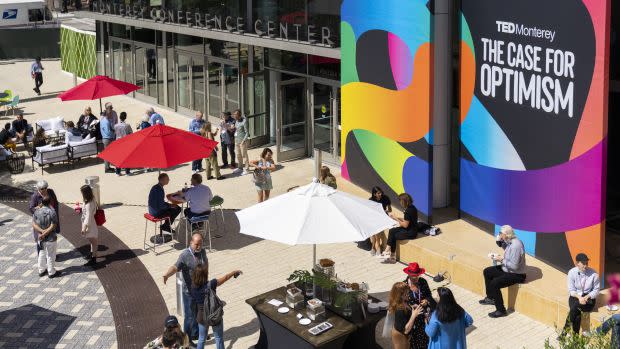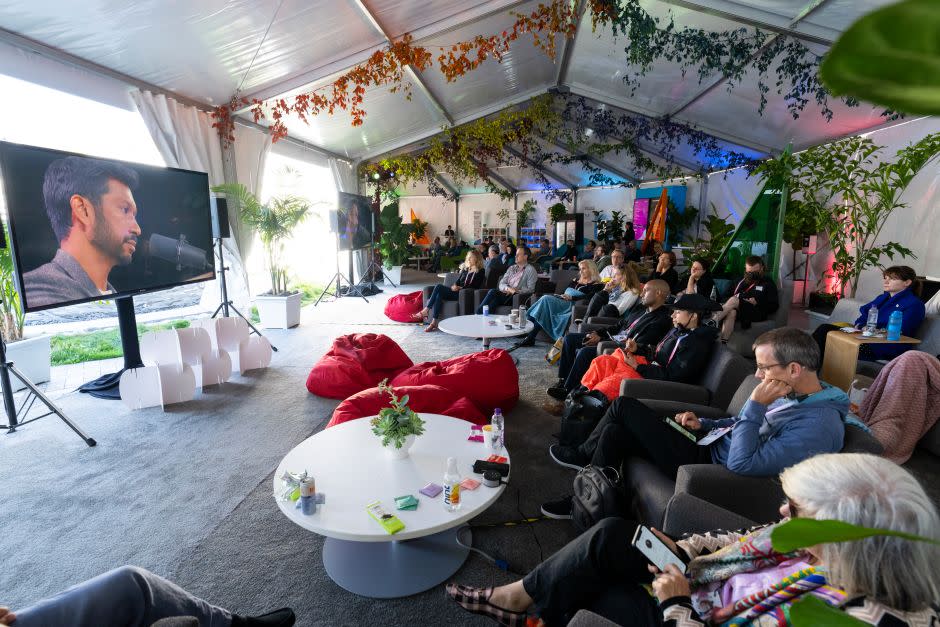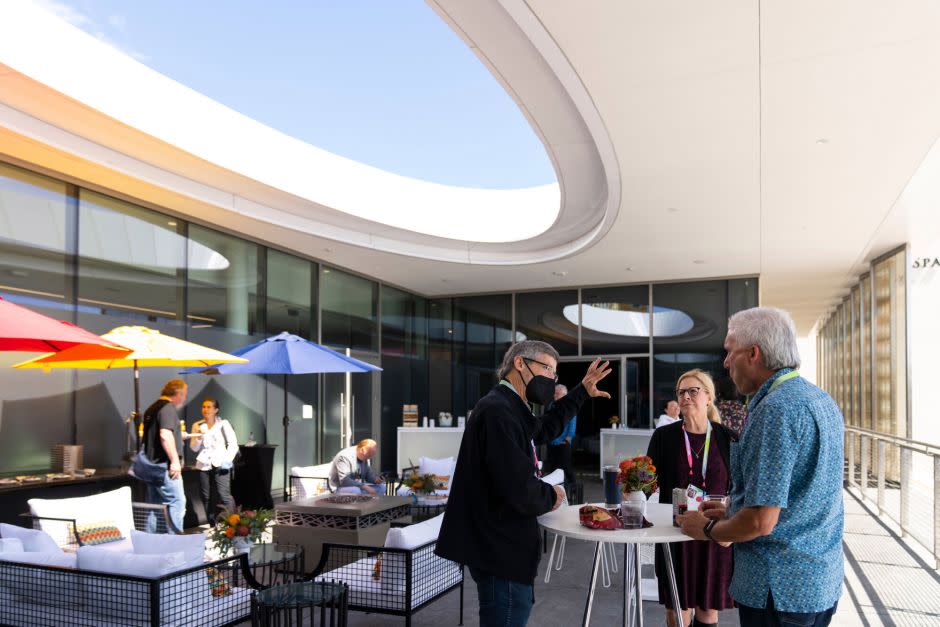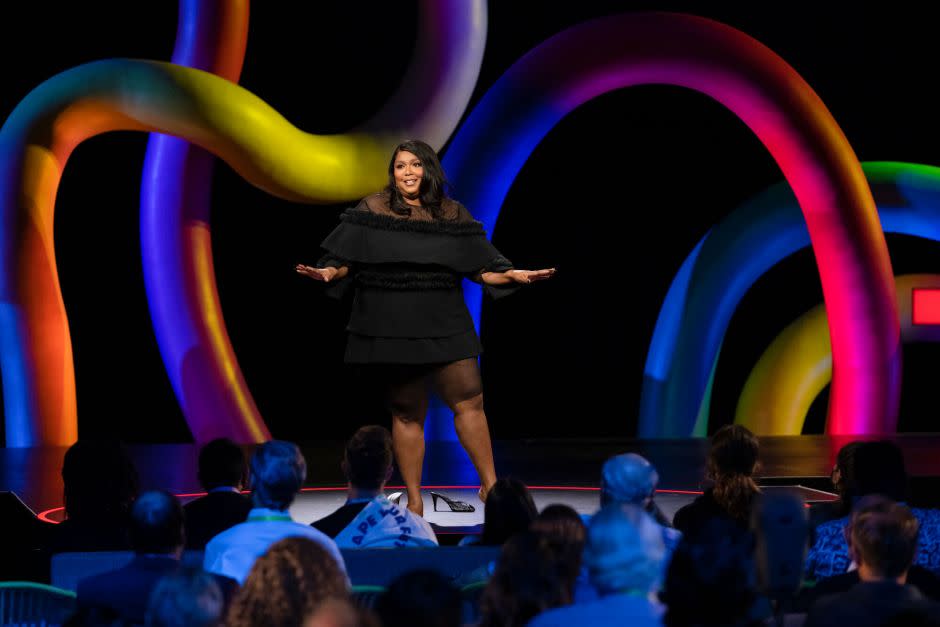How to hold an in-person conference during a pandemic: Lessons from TED

A rare event happened this August in Monterey, California. Some 425 people from 13 countries gathered for a four-day, in-person conference with no reports of anyone getting sick from Covid-19. The program—a TED conference aptly titled TED Monterey: The Case for Optimism—even included seemingly taboo pandemic activities like sitting in packed auditoriums, dining with strangers, and getting together for a night of dancing.
Ladan Wise, deputy director of conferences at TED, oversees a team tasked with obsessively planning every detail of the attendee experience. Their charge this year had particular urgency: how to avoid hosting a super-spreader event.
Vaccine mandates and rapid Covid-19 tests
While last minute changes are the bane of event planners, agility and foresight are essential during a health crisis, says Wise.”You have to be prepared to significantly do more than you’ve ever had to do before because factors change daily,” she explains. “Expect that things will happen that you didn’t plan for.”
One of the biggest changes happened mere days before the event. TED initially opened the conference to anyone who could afford to go, but news about the highly contagious delta variant altered their plans. About 10 days before the conference, they decided to make vaccination a pre-requisite for attendance. At the conference, every attendee had to take a rapid Covid-19 test before they could claim their badge.

“We had to evolve our protocol all the way up to a couple of weeks before the conference and even made some changes during the conference,” says Jay Herratti, executive director of TED. “I’m glad we did it because we figured out how to convene people and keep everyone safe.”
Wise and Herratti spoke with Quartz a week after the Monterey conference to share some insights about the preparations and policies that helped create a successful event.
Design the Covid-19 testing experience
Getting a nasal swab, or any medical diagnostic test for that matter, generally isn’t the most pleasant experience. But Wise, who once worked as a user experience and information architecture specialist for Australia’s health ministry, knew that injecting some design thinking into the ordeal could allay many pain points.
“The goal was: no sterile feel,” she explains. TED set up its onsite health testing station at a tree-lined outdoor mall adjacent to the Monterey Conference Center. Medical technicians were efficient and warm; the standard health questionnaire was improved to make it clearer and friendlier.
“People typically never think about this stuff because they just want to get the data in. Making things delightful is rarely a priority for medical companies,” Wise observes. “But even minor tweaks can make a difference.”

Cheery chairs and tables and a refreshment station were set up in a hangout area for attendees awaiting their results. Wise says the team contemplated the configuration of this space because they didn’t want big groups to form before individuals were cleared.
“We normally get really great ratings on our check-in process for the conference. Can you believe that people have scored the testing process even higher than that?” says Wise, referring to the results of TED’s post-conference attendee questionnaire. “Our goal was to convey that this step shouldn’t feel scary or stressful. It should feel smooth and easy and painless. I think we managed to hit those notes.”
Select the venue strategically
The TED conference is typically held at the Vancouver Convention Center, a sprawling venue that can hold up to 12,000 people. This year, TED went with a much smaller conference center in northern California, which was convenient to TED’s loyal attendee base.
“Because the venue was so intimate … it felt full and everybody got a lot of interaction,” explains Herratti.

Organizers also expanded the number of simulcast viewing areas at the conference. They set up TV screens, beanbags, and the usual array of Steelcase office seating at outdoor tents around the venue.

Take it outdoors.

Diffuse the social awkwardness of wearing face masks
Per CDC’s guidance about preventing the delta variant from spreading at indoor events, TED asked attendees to wear face masks if they wanted to sit in the auditorium. But for most of the four-day event, attendees were left to decide when and if they wanted to keep their masks on.
Knowing that everyone was vaccinated and recently tested gave people reassurance, says Herrati. It also eliminated the social pressure to remove face masks at gatherings for fear of being suspected to be an anti-vaxxer. “There was a delightful lack of judgment going on,” says Wise.



Understand the emotional might of color
The conference’s lively branding and stage design played a key role in creating a fitting mood. Designed by celebrated Broadway production designer David Korins, the wiggly, colorful pathways snaking through darkness proved to be a poetic and practical motif.
“I thought the bright colors would not only match the style guide of the conference, but match the idea of optimism stated in the theme,” Korins explains. “It’s about buoyancy, it’s about building bridges. This kinetic, dynamic, asymmetrical, and celebratory background felt appropriate.”

Lizzo framed by David Korins’s colorful stage at TEDMonterey 2021.
Wise says her team used colors from Korins’s design scheme to create an uplifting mood in the medical testing areas and social places. “It gave us an opportunity to bring a lot of life when people are feeling a little bit uncertain or a little bit nervous about coming together,” she explains. “We had colors everywhere. It was perfect for us.”
Cooperation from the audience is key
None of TED’s protocols would have worked without the cooperation of the attendees. Wise says that establishing a clear, concise, and reassuring communication channel was essential to that. In addition to its daily email updates, TED has a 24/7 app-based concierge called Gigi.
Wise says being firm with the rules also conveyed the message that organizers were taking everyone’s health seriously.

“We were worried about all these extra asks,” says Herratti. ” But the [TED attendee] community was fantastic because people were just so happy to be there. They went along whenever we had to change something during the conference.”
The hurdles and risks they went through to hold a conference at this time was worth it, says Herratti. “For any organization, I think boldly moving forward can can actually pay off. It’s worth the effort because once you figure it out, you’ll feel more confident about getting back to life and getting back to what you’re doing.”
Sign up for the Quartz Daily Brief, our free daily newsletter with the world’s most important and interesting news.
More stories from Quartz:
